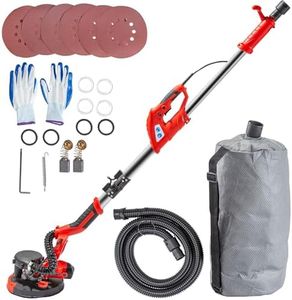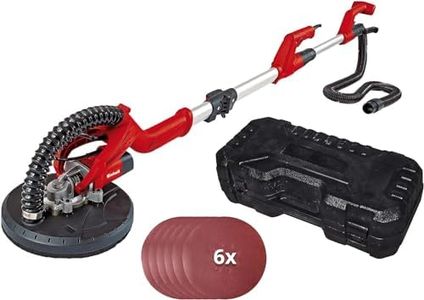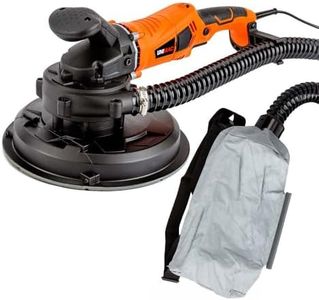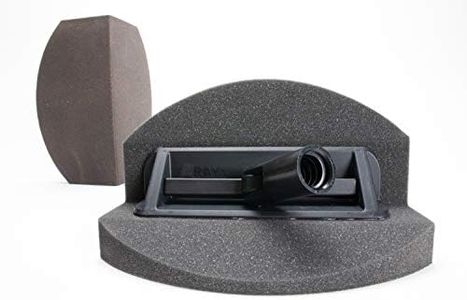We Use CookiesWe use cookies to enhance the security, performance,
functionality and for analytical and promotional activities. By continuing to browse this site you
are agreeing to our privacy policy
5 Best Electric Drywall Sanders
From leading brands and best sellers available on the web.Buying Guide for the Best Electric Drywall Sanders
Choosing the right electric drywall sander can make your drywall finishing work faster, smoother, and far less tiring. When shopping, it's important to consider factors that match both your project needs and how comfortable the machine will be to use over extended periods. Each sander comes with particular features that affect how well it suits different jobs, so understanding these specs will help you find the perfect tool for your tasks.Motor PowerMotor power, usually measured in watts or amps, tells you how much work the sander can do and how quickly it can help you smooth walls. Higher power means the motor can handle tougher jobs, remove material faster, and is less likely to bog down. Lighter projects, like finish sanding drywall in smaller rooms, can be tackled with lower-powered models, keeping the sander easier to hold and control. For heavy-duty sanding across large spaces or rough surfaces, choosing a more powerful motor will deliver better efficiency and speed. Picking the right power depends on how big and tough your jobs are—bigger and rougher means more power is a plus.
Sanding Head Type and SizeThe sanding head is where the abrasive pad attaches, and its size and shape determine how much area you can cover at once and how easily you can reach corners or edges. Larger heads (around 9 inches) are better for large, flat areas, letting you cover more wall with each pass. Smaller heads give you more control, making them good for tight spaces or detailed work. Some sanders feature swivel or flexible heads that adjust to wall angles for consistent pressure. Think about the kind of work you do most: for general room work, a larger head is more efficient; for tight corners and more precise work, look for smaller or flexible heads.
Dust Collection SystemDrywall sanding can generate a lot of fine dust, so the dust collection system is very important for keeping your workspace clean and protecting your lungs. Many electric sanders include a built-in vacuum or a way to connect to a shop vacuum. Some collect more dust than others, depending on the power of the vacuum and the design of the dust shroud. If you work indoors or in finished homes, having a strong dust collection system can save you a lot of cleanup and keep your air healthier. If you're less concerned about dust, this feature might be less critical.
Weight and ErgonomicsThe weight and feel of a sander are vital, especially if you’re sanding ceilings or larger areas for long periods. Heavier sanders can tire your arms faster, though sometimes they feel steadier. Ergonomic handles and adjustable shafts can make a difference, especially if you need to reach awkward angles or overhead. If you expect to do a lot of ceiling work or prolonged sanding, look for a lighter model with comfortable grips. For quick tasks or if strength isn’t an issue, weight may matter less.
Variable Speed ControlVariable speed control lets you adjust how fast the sanding pad spins, offering flexibility to match different surfaces or sanding tasks. Faster speeds remove material more quickly and are good for rough surfaces; slower speeds are better for fine work or delicate finishing. Having this control helps you avoid damaging surfaces and adapt to your drywall’s condition. If you need flexibility or precision (like for patching or finish work), variable speed is a very helpful feature. For single-type sanding jobs, a fixed-speed might be enough.
Reach and Shaft LengthThe shaft length determines how high or far you can reach without a ladder. Some sanders have extendable shafts for high ceilings or tall walls, letting you work safely from the ground. If you mostly do wall or ceiling work in big rooms, look for a model with a longer or telescopic shaft. For smaller or tighter spaces, a shorter or more compact design is easier to maneuver.








